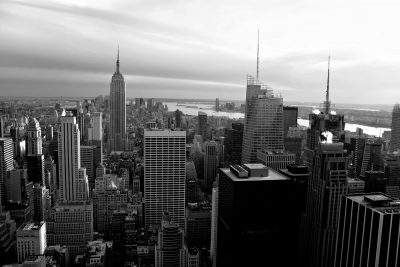Doomsday scenario for building owners as Manhattan vacancy tops 13 percent
 For a fourth straight month the number of vacant apartments in New York City increased, according to a survey of the members of the Community Housing Improvement Program (CHIP).
For a fourth straight month the number of vacant apartments in New York City increased, according to a survey of the members of the Community Housing Improvement Program (CHIP).
The survey sample represents more than 100,000 units of housing, and found the vacancy rate to be 13.2 percent when including both units listed for lease and other vacant units.
“This is a housing crisis. Hundreds of thousands of apartments that were occupied a year ago are now sitting empty,” said Jay Martin, executive director of CHIP.
“Lack of demand and fear over the slow economic recovery have left property owners in dire need of help, and our elected officials have offered us no real solution so far.”
Our survey also indicates that 7.6 percent of rent regulated units are vacant, which equates to roughly 70,000 units in the city.
The high vacancy among these units is a confluence of factors stemming from the pandemic and the passage of the Housing Stability and Tenant Protection Act of 2019, according to CHIP.
In some places, rent-stabilized buildings are more than 75 percent vacant because legal rents are close to market rate and there is a lack of demand from renters. Owners are hesitant to offer preferential rents on these units because they will be locked into those lower rents for decades, even as the economy rebounds.
“Three- and four- bedroom units have been the hardest hit by this pandemic because many young professionals and college students do not want to have roommates anymore,” explained Martin.
“And many families have moved out of the city for better schooling options or open space. In some places, an owner would have to drop the rent by 50% to rent out an apartment. But, most owners cannot sustain that type of operating loss for the next few decades because of the high operating costs, especially property taxes.”
In addition to the growing number of vacancies, the CHIP survey found that 17.6 percent of residential tenants have paid no rent in November. Additionally, 43.4 percent of commercial properties have paid no rent.
Members also report that they have offered their other commercial tenants significant concessions during the COVID-19 emergency. Many rent-stabilized buildings have first-floor retail stores that have historically been able to offset the artificially low rents in the residential units.
The survey was conducted between November 15 and November 18. The sample size is estimated to be between 100,000 rental units and 120,000 rental units. Respondents with portfolios under 50 units made up 32.1 percent of the survey, owners with 51 to 500 units were 35.8 percent of the survey size, and 32.1 percent of the respondents owned or operated more than 500 units. The geographic breakdown was 24 percent in the core of Manhattan, 21.2 percent in upper Manhattan, 19.8 percent in Brooklyn, 16.5 percent in the Bronx, 14.7 percent in Queens and 3.8 percent on Staten Island.
Source: rew-online.com















 Accessibility
Accessibility